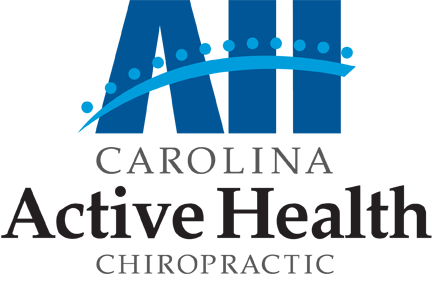What is it?
Spinal decompression or traction is a modern, high tech, non-surgical traction procedure that effectively treats disabling low back, neck, and radiating leg and arm pain. This type of traction is very successful in relieving pain associated with disc herniation, degenerative discs, and posterior facet syndromes, due to decompression of spinal discs and facet joints by utilizing traction, distraction and positioning.
What is it used for?
Research to develop this procedure was conducted by prominent physicians, engineers and technicians at major teaching hospitals.
Do you have a herniated disc, multiple herniated discs, degenerative disc disease, facet syndrome? Is your doctor suggesting surgery, pain management, or physical therapy? Call for a free consultation about our spinal treatment programs.
Our DTS Triton traction system is FDA approved and has been clinically proven with a very high success rate for the pain and symptoms associated with herniated and/or bulging discs…even after failed back surgery.
Research indicates that the disc is responsible for a significant number of lumbar/leg pain and neck/arm pain syndromes. Compression increases internal disc pressure leading to possible protrusion, herniation and bulging of disc material.
DTS Triton spinal traction therapy in conjunction with the additional treatment modalities provided in our clinic can, in most cases, effectively relieve the pain and disability resulting from disc injury and degeneration, aiding in the healing of damaged discs and reversing dystrophic changes in nerves. DTS Triton spinal traction treats the functional and mechanical aspects of disc pain through non-surgical traction (decompression) of spinal discs.
Clinical studies verify the significant reduction of internal disc pressures which result in the non-surgical traction of the disc and nerve root. Older, conventional traction has never demonstrated a reduction of this internal disc pressure; on the contrary – many older traction devices actually increased internal disc pressure, most likely due to reflex muscle spasm.
Our new computer controlled DTS Triton spinal traction equipment is designed to apply distraction and decompression to the patient’s spine without producing reflex paravertebral muscle contractions.
What regions or complaints is it often helpful for?
By significantly reducing internal disc pressure, DTS Triton spinal traction promotes retraction of the herniation back into the disc and promotes intake of fluids, oxygen and other substances necessary for healing the disc. This activity stimulates repair and inhibits leakage of materials from the nucleus of the disc.
The most recent research trial sought to correlate clinical success with MRI evidence of disc repair as a result of such treatment and found that reduction of disc herniation ranged between 10% and 90% depending on the number of sessions performed, while disc annulus healing was evident in all cases.
The most recent clinical study of 219 patients has shown that this type of non-surgical therapy, provided nearly immediate resolution of symptoms for 86% of the participants, and 84% remained pain-free 90 days after the treatment was finished. (See our section on clinical studies.)
What else do I need to know?
DTS Triton Spinal Traction vs. Surgery:
Surgery Facts:
· In some cases surgery is necessary, more often it is not necessary.
· Increased danger from anesthetic.
· Increased danger from possible infections.
· Prolonged recovery time after back surgery is generally 6-8 weeks.
· Another 6-8 weeks of rehabilitation and physical therapy at 3 to 5 times per week.
· Lower rate of successful results.
· Without insurance patient’s cost for surgery is often over $25,000.
· Even with insurance, patient’s share of surgical cost is often over $4,000 to $5,000.
DTS Facts:
· Relief of acute or chronic (long term) low back pain and /or associated leg pain or numbness, generally within 4 weeks.
· Successful in over 75% to 85% of patients.
· Early return to work.
· Non-invasive and extremely safe.
· No injections.
· No knives.
· No drugs.
· No patient hospitalization.
· Cost effective treatment with a total cost usually less than $1500.
How is Spinal Decompression different from older type traction?
Older type traction is a simple steady force that is put on the patient’s body with the intent of unloading the body's joints, muscles and other structures. For example, hanging upside-down is a common method to put the spine into traction. Rather than one's body weight putting stress on the spine, which is what happens when standing erect; the body weight is working to unload the spine.
Various forms of traction have been around for over 1000 years; however, pain relief has been inconsistent and short-lived until now. In fact, several clinical studies have shown ordinary (old type, steady pull) traction to be an ineffective form of back and neck pain relief. The reason is unexpected, but pretty simple. Our bodies react to the steady pull of the traction on the spine by contracting, or squeezing, the muscles surrounding the spine. Rather than achieving the desired effect of unloading the spine, the pressure on the spine is actually increased, thus increasing intradiscal pressure. Thus this old type of traction does NOT allow the discs to re-hydrate and heal, which is what ultimately yields pain relief.
DTS Triton Spinal Traction, on the other hand, is a modern, computerized, updated form of traction. Computer technology is used to control variations in the unloading (traction pull) of the spine, effectively avoiding the body's muscle contraction response. Notice in the figure below that the traction tension is varied over time according to the graph. The doctor can control how many progressive tension steps are experienced by the patient before reaching the maximum tension. The doctor also has complete control over how long the tensions are held steady and how often they are repeated through the computerized system.


